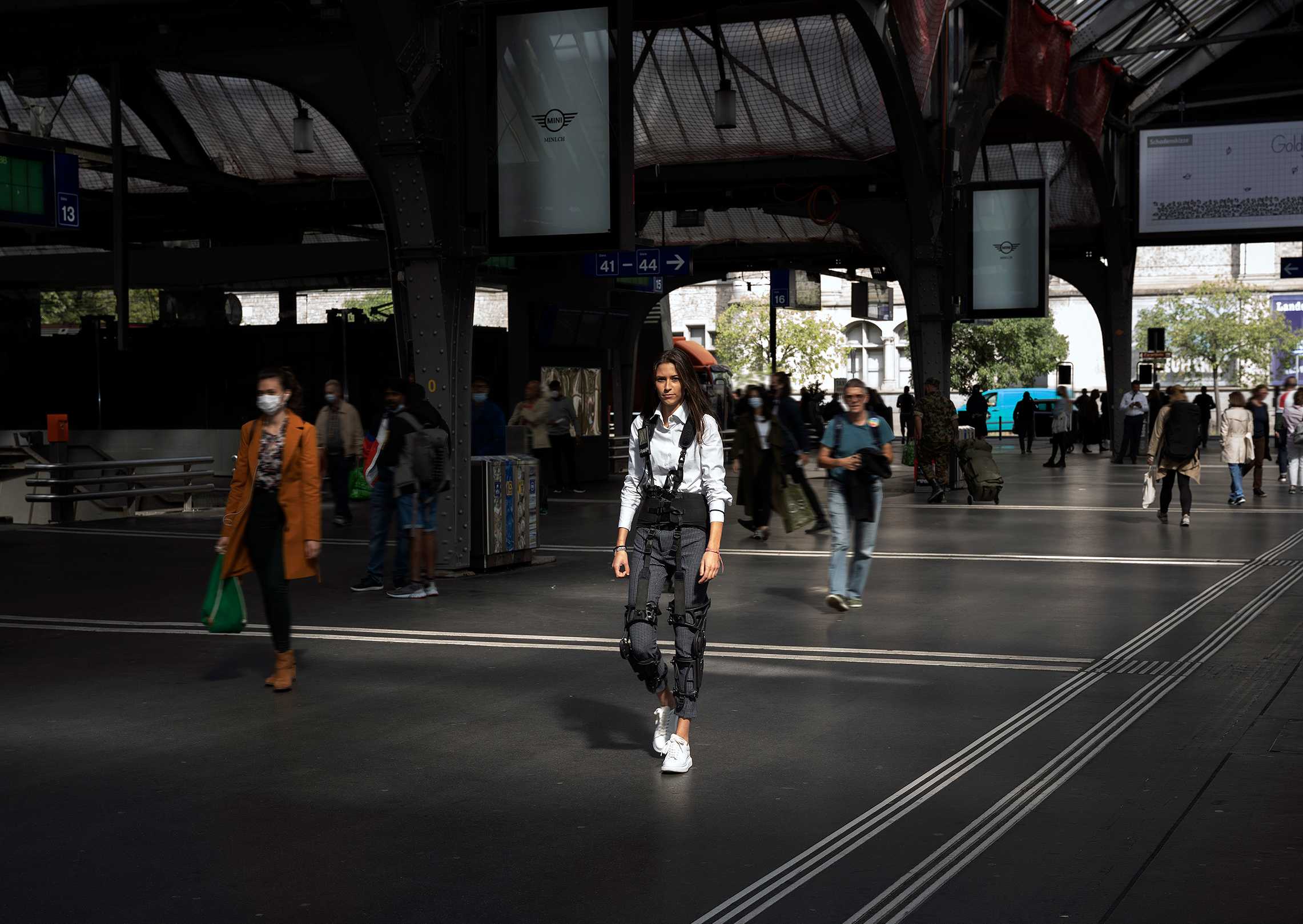The Myosuit – textile-powered mobility
The Myosuit (MyoSwiss AG, Switzerland) is a soft, flexible, and lightweight wearable robot that supports people with lower limb impairment in regaining their ability to move and walk. The robot consists of functional textiles and lightweight structural components and can be worn on top of daily clothes. For these reasons, the Mysouit is useful not only to facilitate rehabilitation training in clinical environments, but also to assist users in performing activities of daily living. The SMS lab extensively collaborates national and international clinics to validate the technology on various target groups (children, incomplete spinal cord injury, stroke, heart failure).
Contact Person
Adrian EsserOur goal is to increase the independence and autonomy of people with a physical impairment, to facilitate their integration in the community and allow them to lead an independent and fulfilling life. With this vision in mind, the SMS lab started, in 2014, the development of a soft, lightweight, and portable wearable robot that behaved as an external layer of muscles, to support the hip and knee joints against gravity, during walking. This was the first step towards the Myosuit, now one of the first CE-marked wearable robots in Europe, commercialized by MyoSwiss AG.
To assist the human body, the Myosuit relies on functional textiles, passive elastic bands and lightweight load-bearing plastic components. Artificial tendons transmit forces from the motors, worn in a backpack, to the human joints, effectively replicating the functioning principle of the muscle-tendon unit of the human body. By anchoring the device to specific body landmarks, forces translate into considerable torques at the joints, working in parallel with the biological muscles, to facilitate walking, sit-to-stand transfers and static balancing. The Myosuit achieves a portable and compact design by exploiting muscular synergies that contribute to walking: the artificial tendons simultaneously support multiple joints with only one motor per leg.
Our studies have shown that activity-based training with the Myosuit is feasible and safe for individuals with diverse neuromuscular and neurological gait disorders; furthermore, the device can be used to increase the intensity of movement training, through a reduction of the energetic cost of transport, both indoors, in clinical environments, and outdoors, for example during a hike in the beautiful Swiss Alps. We also showed the practicality of the Myosuit for in-home and community-based training and engagement in activities of daily life.
Leveraging on the knowledge gained on adults, we are now developing a new version of the Myosuit for the pediatric population to enlarge the target that can benefit from such technology.
